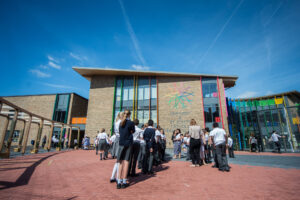Finding ways to save energy in schools is growing in popularity – but, all too often, finding ways to fund those energy-saving projects remains challenging.
Whether you’re making the case to the school board or applying for financing through a scheme like Salix, here are our top 5 tips for getting that cashflow going:
1. Calculate the carbon savings per £
Make sure you know all the facts about how much your project is costing per tonne of CO2 saved. Schools are often surprised to find that the less well-known, less flashy technologies can deliver greater CO2 savings per pound than measures like solar PV.
Don’t automatically opt for the eco-bling; take a long, hard look at the numbers, instead. It’s actually cheaper to save carbon by improving energy efficiency than it is by generating renewable energy. This means it’s easier to make the numbers stack up on an energy efficiency project.
2. Look at payback periods and ROI…
It might seem obvious to scrutinise the return on investment figures when trying to mobilise funding, but a recent study found something surprising…
According to The Carbon Trust’s The Business of Energy Efficiency study, when CFOs were asked to estimate the average internal rate of return (IRR) of energy efficiency investments, the figure they estimated was less than half the actual rate. Not quite ‘on the money’, then!
If you’re trying to persuade the person that holds the purse strings to invest in energy efficiency, make sure they know exactly what these investments are worth: how long it will take for the school to get its money back, and what the long-term financial benefit will be.
3. …but weigh up other factors, too
Remember, however, that raw data doesn’t tell the whole story. There are likely to be benefits to CO2-reduction projects that go beyond savings on energy costs.
Factor maintenance savings into the equation, too. If you remove the hassle of replacing dead lamps in classrooms, or cut down on servicing the school’s boiler, that has financial implications. There’s also a value attached to the better light quality (as a result of low-energy lighting upgrades) or a better regulated internal climate (resulting from use of building controls for heating and ventilation).
In fact, a study by the International Energy Agency found that, when the value of increased productivity resulting from energy-savings upgrades was integrated into the traditional IRR calculations, the payback period for energy efficiency measures dropped by more than half.
4. Consider government-backed funding…
For schools that qualify, government-backed Salix financing can be a lifeline, opening up the possibility to borrow money for energy-saving projects at 0% interest. However, Salix is far from straightforward. Depending on where you are in the country, whether you’re a maintained school or an academy, a sixth form college or an FE college, the Salix pot for which you can apply may vary.
Differing criteria and long application forms can make Salix seem confusing, but don’t be discouraged. Look for energy-saving technologies that have already been approved by Salix in previous schools projects. This will increase your chances of securing finance for your project. In fact, it may be pertinent to consider using a partner experienced in Salix applications, and leave the form-wrangling to an expert.
5. …or lease arrangements
If Salix finance isn’t available for your school, it’s not the end of the story. The combination of low interest rates and high energy bills have created opportunities to take advantage of alternative financial arrangements.
Under a leasing scheme, a flexible operating lease can be used to finance energy-saving upgrades without the need for capital investment. Using this model, schools can arrange finance on a ‘pay as you save’ basis and, in most cases, the savings on electricity bills will outweigh the lease cost.
Funding that much-needed project to save energy may seem an uphill struggle. But, provided you make a compelling case for your energy-saving upgrades, and look into trusted sources of finance, you should be able to get the all-important green light.
Still confused about how to secure finance? Take a look at some best practice examples of how other schools have overcome the funding hurdle in order to save energy.
Read our Education Press Portfolio to find out more about how our energy saving technologies have helped schools and colleges nationwide.







